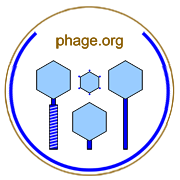

Bacteria either embedded in semisolid environments (e.g., agar-containing media) or spread on the surface of more-solid media and which can serve as indicators (that is, hosts) for phage plaque formation.
Lawns begin with application of bacteria. Depending on the state of the bacteria at the point of application, they may or may not then go through a lag phase and eventually will enter into stationary phase. The bacteria within lawns grow as microcolonies and the fewer bacteria that a lawn is initiated with then the larger those microcolonies will grow.
Lawns will be more robust due to growth for longer periods the thicker the bottom agar layer. Rates of lawn growth and maturation as well as lawn density both at the initiation of lawns and at the point of lawn maturation generally can have an impact on phage plaque formation, size, and morphology. Lawns also can consist of more than one bacterial type, i.e., as seen with the mixed indicator method/technique, which can also impact plaque morphology.
As noted, lawns consist of bacterial microcolonies rather than representing homogeneous dispersions of bacteria. Plaque formation therefore can be viewed as involving a combination of virion diffusion between microcolonies and phage penetration into as well as exploitation of individual bacterial microcolonies. Models of phage plaque formation, by contrast, tend to view lawns instead as consisting of homogeneous dispersions of bacteria, a state that exists, at best, only at the point of initiation of lawn formation.
For more on this topic, see Wikipedia, Google, and PubMed. Contact web master. Return to terms.